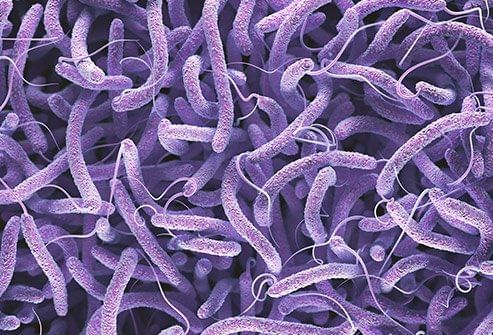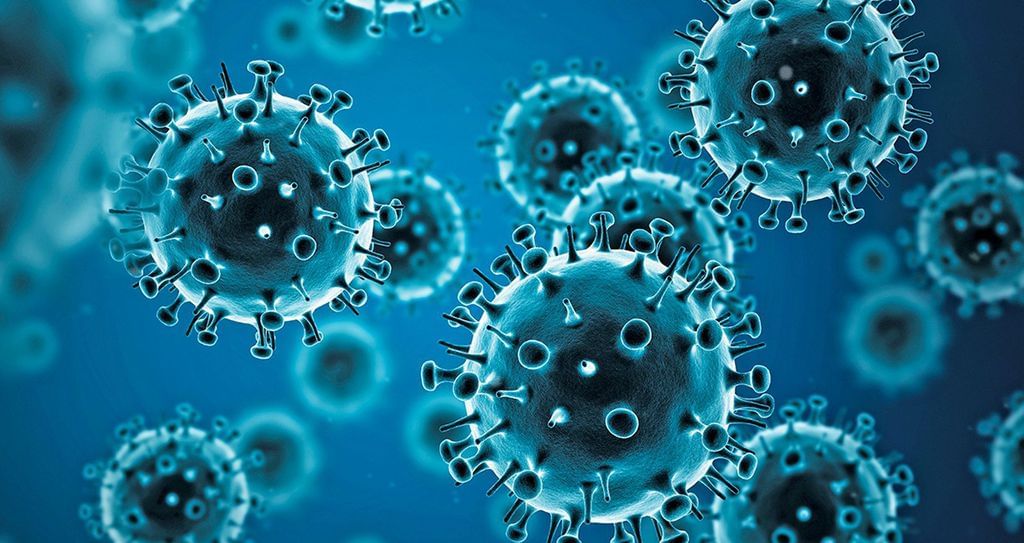Bank Exams Exam > Bank Exams Notes > General Awareness > Human Diseases - Notes, Biology
Human Diseases - Notes, Biology | General Awareness - Bank Exams PDF Download
Bacterial Diseases:-
Tuberculosis
- By the bacteria, mycobacterium tuberculosis causes infection in lungs where it produces a toxin called tuberculin that causes high fever.
- BCG (bacillus – calmette – guerin) vaccine gives considerable protection against TB.
Diphtheria
- Mainly from 2 – 5 Years, but can also be in adults.
- By the bacteria, corynebacterium diphtheriae.
- It grows in the membranes of respiratory tract and blocks the respiratory passage resulting in difficult breathing.
- Babies should be immunized within first 6 weeks of their birth using DPT vaccine (Diphtheria, whooping cough and tetanus)..
Whooping Cough (or Pertussis)
- By the bacteria, Bacillus Pertussis.
- It begins with mild fever and an irritating cough that gradually becomes paroxysmal (whooping).
- The children can be immunized by the use of DPT vaccine.
Cholera
- Caused by the bacteria vibrio comma.
- It is transmitted through contaminated food and water.
- Symptoms of disease are vomiting, acute diarrhoea and muscular cramps.
- Dehydration and loss of minerals are the other symptoms.
 Vibrio cholerae
Vibrio cholerae
Diarrhoea
- These are a group of intestinal infectious diseases including the food poisoning.
- All these have a common symptom of diarrhea.
- The pathogens responsible for these diseases are Escherichia coli, Shigella sp., Camylobactera and Salmonella.
- Spreads through contaminated water, food, etc.
Leprosy (or Hansen’s disease)
- Caused by a rod – shaped bacterium Mycobacterium leprae. It is a chronic infection of the skin and other tissues including nerves.
- The symptoms include Ulcers, Nodules, Scaly Scabs, Deformities of Fingers and Toes and Wasting of Body Parts.
- The disease spreads only after a long and close contact with the patient (one of the least infectious of all infectious diseases).
Tetanus
- By a motile bacteria, Clostridium Tetani, found in Soil, Dust, Water, etc.
- The bacteria enter the body through injured surfaces.
- It takes about one – two weeks for bacteria to show first symptoms.
- The disease is characterized by painful contraction of muscles usually of the neck and jaws followed by the paralysis of thoracic muscles.
- It is a disease of the C.N.S. (also called lock – jaw).
- ATS (Anti – tetanus serum) is prescribed.
Pneumonia
- Caused by Streptococcus pneumoniae.
- It is inflammatory disease of lungs.
- It is characterized by sudden chill, chest pain cough, rapid shallow breathing and high temperature.
- In this the fluids collect in the alveoli and bronchioles due to which the lungs do not get sufficient air to support life.
Typhoid
- Caused by Salmonella typhi which is found in the intestine of humans.
- Typhoid spreads through food, milk and water contaminated with intestinal discharges either directly or through flies and personal hygiene.
- Main symptoms are high fever, headache, diarrhoea, gastrointestinal disorder like ulceration of intestine, etc.
Plague
- Plague is primarily a disease of rat.
- It is caused by rod shaped bacterium Pasteurella/Yersinea pestis which is an endoparasite of gut of rat flea, Xenopsylla cheopsis.
- Rat flea is an ectoparasite of rat.
- Its germs can also be transmitted from man by head louse and bed bug.
Plague is of 3 Types :
Bubonic Plague:
It is a blood disease in which bacteria multiply in the blood stream and localize in the lymph nodes, especially those of armpits, neck and groin. It is characterized by high fever, weakness, enlargement of lymph nodes, haemorrhages which turn black. The patient dies thereafter. Hence, plague is also called Black Death.Pneumonic Plague:
Characterized by haemorrhage of bronchi and lungs. It spreads from human to human (without rat flea) through droplets and fomites.Septicemic Plague:
Characterized by anemia, fever, chill, etc., leading to death within 2 days.
Anthrax
- It is an acute infectious disease caused by Bacillus anthracis.
- It is most common in agricultural regions where it occurs in animals.
- It most commonly occurs in wild and domestic lower vertebrates (cattle, sheep, goat, camel and other herbivores), but it can also occur in humans when they are exposed to infected animals or tissues from infected animals.
Gonorrhoea
- By a bacteria, Neisseria gonorrhoeae.
- It is transmitted through sexual contact .
- It may result in female sterility.
Syphilis
- Also a sexual disease caused by a bacteria, Treponema Pilludum, transmitted throng sexual contacts.
Viral Diseases:-
Mumps
- Caused by a Virus : Paramyxovirus.
- Characterized by painful swelling of the salivary glands (particularly the parotid gland) accompanied with high fever.
- Due to this, the movement of the jaw becomes very difficult.
- In adults, the gonads (both testes and ovaries) may also become inflammed.
Measles
- Caused by the virus, rubeola virus, 10 – 12 days incubation period.
- At the end of this period, the buccal and respiratory passage (mucous membranes) show signs of inflammation.
- There is a loss of appetite and eruption occurs on the skin.
Poliomyelitis
- Caused by the smallest known virus, enterovirus.
- The virus occurs only in man and it enters the body through contaminated food and water.
- It multiplies in the cells of intestinal wall and then the infection spreads through the blood stream and lymphatic system.
- The virus mainly attacks the C.N.S. and destroy the cells of the dorsal horn of spinal cord.
- This results in the atrophy of the muscles of arms and legs as these muscles do not get the nerve impulses.
- It usually leads to paralysis
Influenza (or FLU)
- Influenza is an acute respiratory tract infection caused by influenza virus.
- Influenza viruses are classified within the family Orthomyxoviridae.
- It spreads mainly from person to person by droplet infection or droplet nuclei created by sneezing, coughing or talking.
- Influenza causes inflammation of upper respiratory tract, nose, throat and eyes.
 Influenza virus
Influenza virus
Common Cold
- Caused by rhinovirus (‘rhino’ means nose) which belongs to picornavirus group.
- The viruses are transmitted through droplet nuclei, pharyngeal and nasal secretions.
- Symptoms include headache, watery eyes, sneezing, excessive nasal secretions and cough.
Rabies (Hydrophobia)
- Caused by RNA virus called Rabies virus. The virus is neutrotrophic, i.e., damages motor neurons of brain.
- Rabies affects all warm blooded animals and is exclusively transmitted by the bites of carnivores.
- It leads to encephalitis, fear of water (hence called hydrophobia), high fever, severe headache, spasm of throat and chest leading to death. Vaccine against rabies was developed by Louis Pasteur.
Hepatitis
- Hepatitis is the viral infection of liver.
- It is accompanied by loss of appetite, nausea, whitish stool, but orange brown urine and jaundice which occur due to bilirubin released from damaged liver cells.
- Hepatitis is of two types:
- Hepatitis A (Epidemic Jaundice) : Caused by hepatitis A virus (HAV). It is transmitted from person to person by faecal-oral route. It is benign and usually not fatal.
- Hepatitis B (Serum Hepatitis) : Caused by hepatitis B virus (HBV). It is transmitted by transfusion of contaminated blood and blood products. It may be chronic and is fatal.
Dengue Fever
- It is an acute tropical frequently epidemic viral disease of humans which is caused by RNA containing dengue virus.
- It is transmitted by the bite of female tiger mosquid Aedes aegypti during day time.
- Two types of dengue fever are :
- Classical dengue fever : More severe in adults and characterized by mild conjunctivitis, high fever, backache, retro-orbital pain (pain behind the eye ball) etc.
- Dengue haemorrhagic fever: Fatal form with nausea, headache, vomiting abdominal pain, etc.
Yellow Fever
- Caused by arbovirus.
- It is a haemorrhagic disease transmitted by the infected Aedet aegypti.
- Symptoms are headache, fever, vomiting, rupture of veins in kidneys, spleen, liver, etc.
- In severe cases, the skin of the sufferer becomes yellow from jaundice, hence the name yellow fever.
- PROTOZOAN DISEASES
Malaria
- By a Protozoan, Plasmodium. There are several species of Plasmodium with different periods of incubation :
1. Plasmodium Vivax
2. Plasmodium Malariae
3. Plasmodium Falciparum
4. Plasmodium Ovale
- After incubation period, temperature of body rises with a feeling of chill, signs of headache and nausea.
- Then temperature falls (symptom : sweating). The above symptoms are repeated after every fixed hrs depending upon the species.
- Certain fishes like cat fish, Gambusia and aquatic birds eat mosquito larvae.
- Quinane, a product of Cinchona tree, is administered for Malaria.
Kala Azar (Leishmaniasis)
- Caused by Leishmania donovani.
- It is spread by sandfly (Phlebotomus) and characterized by enlarged spleen and liver with high fever.
- Kala azar is also known as dum dum fever.
Giardiasis
- Caused by Giardia intestinalis (first parasitic protozoan known).
- It inhabits upper part of small intestine (duodenum and jejunum).
- Characterized by mild diarrhoea involving passage of pale, bulky, foul smelling and greasy stool.
Amoebiasis (Amoebic dysentry or Enteritis)
- Caused by Entamoeba histolytica.
- Characterized by abdominal pain, alternating diarrhoea and constipation, stool with blood, mucous and mucous membrane pieces.
- HELMINTHIC DISEASES
Ascariasis
- Caused by Ascaris lumbricoides (Vector : Cockroach and Flies)
- Symptoms are weakness, anemia, diarrhea, vomiting, etc.
Filariasis
- Caused by Wucheraria bancrofti.
- Transmitted by female Culex mosquito.
- Also called Elephantiasis – due to enlargement of body parts like legs.
- Symptoms include fever, proliferation of endothelial cells and deposition of metabolites in the walls of lymph vessels resulting in swelling of affected parts.
Taeniasis
- Caused by Taenia solium (or pork tapeworm). Transmitted by pig.
- Symptoms are abdominal pain, indigestion, vomiting, constipation, anorexia (loss of appetite), nervous disorder.
- FUNGAL DISEASES
Ringworm
- Caused by Microsporum.
- Spreads by unbathed cats, dogs or infected persons.
- In this, sores are formed which become reddish and contain blisters
Some other fungal diseases with their causative agents are Aspergillosis (Aspergillus fumigatus), Meningitis (Cryptococcus neoforrnans), Dermatitis of beard and hair (Trichophyton verrucosum) and Athlete’s foot (Tinea pedis).
The document Human Diseases - Notes, Biology | General Awareness - Bank Exams is a part of the Bank Exams Course General Awareness.
All you need of Bank Exams at this link: Bank Exams
|
365 videos|700 docs|149 tests
|
FAQs on Human Diseases - Notes, Biology - General Awareness - Bank Exams
| 1. What are the symptoms of tuberculosis? |  |
Ans. The symptoms of tuberculosis include persistent cough, chest pain, fatigue, weight loss, fever, night sweats, and loss of appetite.
| 2. How is diphtheria transmitted? |  |
Ans. Diphtheria is transmitted through respiratory droplets from an infected person, usually through coughing or sneezing. It can also spread by coming into contact with items contaminated by the bacteria, such as toys or utensils.
| 3. Is whooping cough contagious? |  |
Ans. Yes, whooping cough, also known as pertussis, is highly contagious. It spreads easily from person to person through respiratory droplets when an infected person coughs or sneezes.
| 4. What is the main cause of cholera? |  |
Ans. Cholera is mainly caused by the consumption of food or water contaminated with the bacterium Vibrio cholerae. Poor sanitation and lack of clean drinking water are major contributing factors to its spread.
| 5. Can pneumonia be prevented? |  |
Ans. While pneumonia cannot always be prevented, there are measures that can reduce the risk of contracting the disease. These include practicing good hand hygiene, getting vaccinated against pneumonia, avoiding close contact with sick individuals, and maintaining a healthy lifestyle to boost the immune system.
Related Searches

















